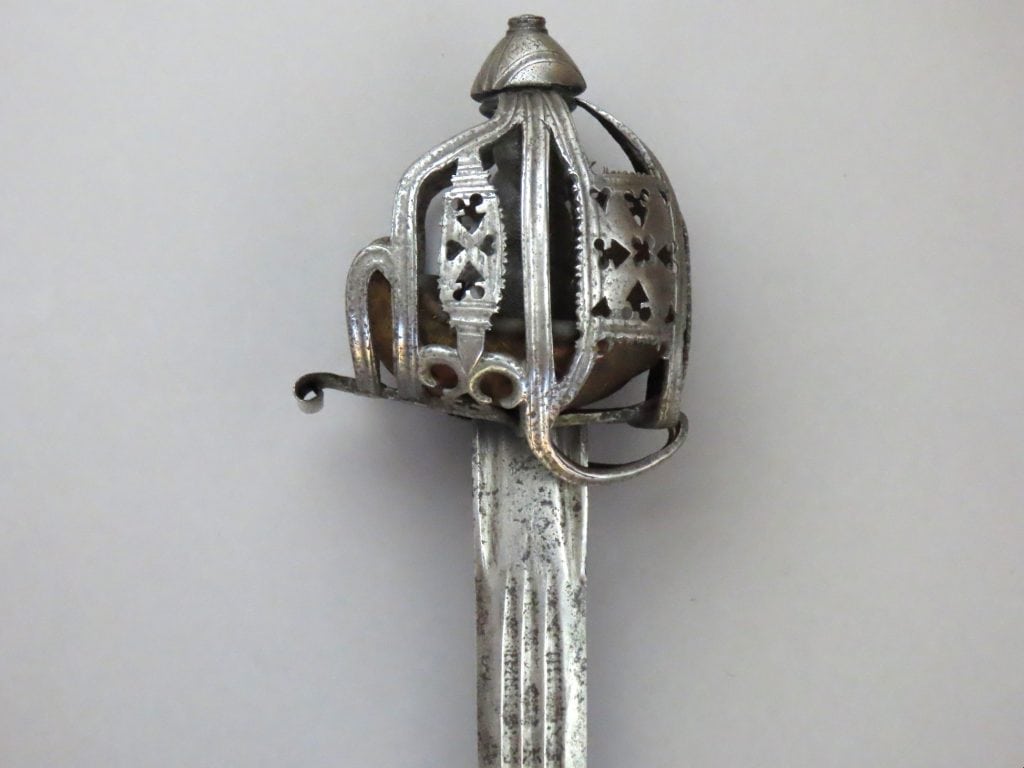
A finely forged Scottish Basket Hilted Broadsword in the “Glasgow” style dating to circa 1720 by John Simpson (II) of Glasgow.
To enquire about this itemplease click here
Price: £
Ref: 073.23
Item Description
This imposing sword with its heavy hilt and broad blade is typical of one belonging to a Scottish Highland Chieftain or Clan Champion during the late 17th and early 18th centuries. Whilst it was undoubtedly an effective weapon, a sword with such an imposing profile was also employed to reinforce the warrior status of the owner in tribal clan society as someone to be feared and respected. The maker, the second John Simpson, was admitted Freeman of the Incorporation of Hammermen in Glasgow in 1711, after which he was entitled to produce swords in his own name, and he was dead by 1749. Simpson made swords for the Highland Clans and for the government. During his working life he witnessed the decline of traditional Highland society until its final collapse after the last Jacobite Rebellion in 1745/6.
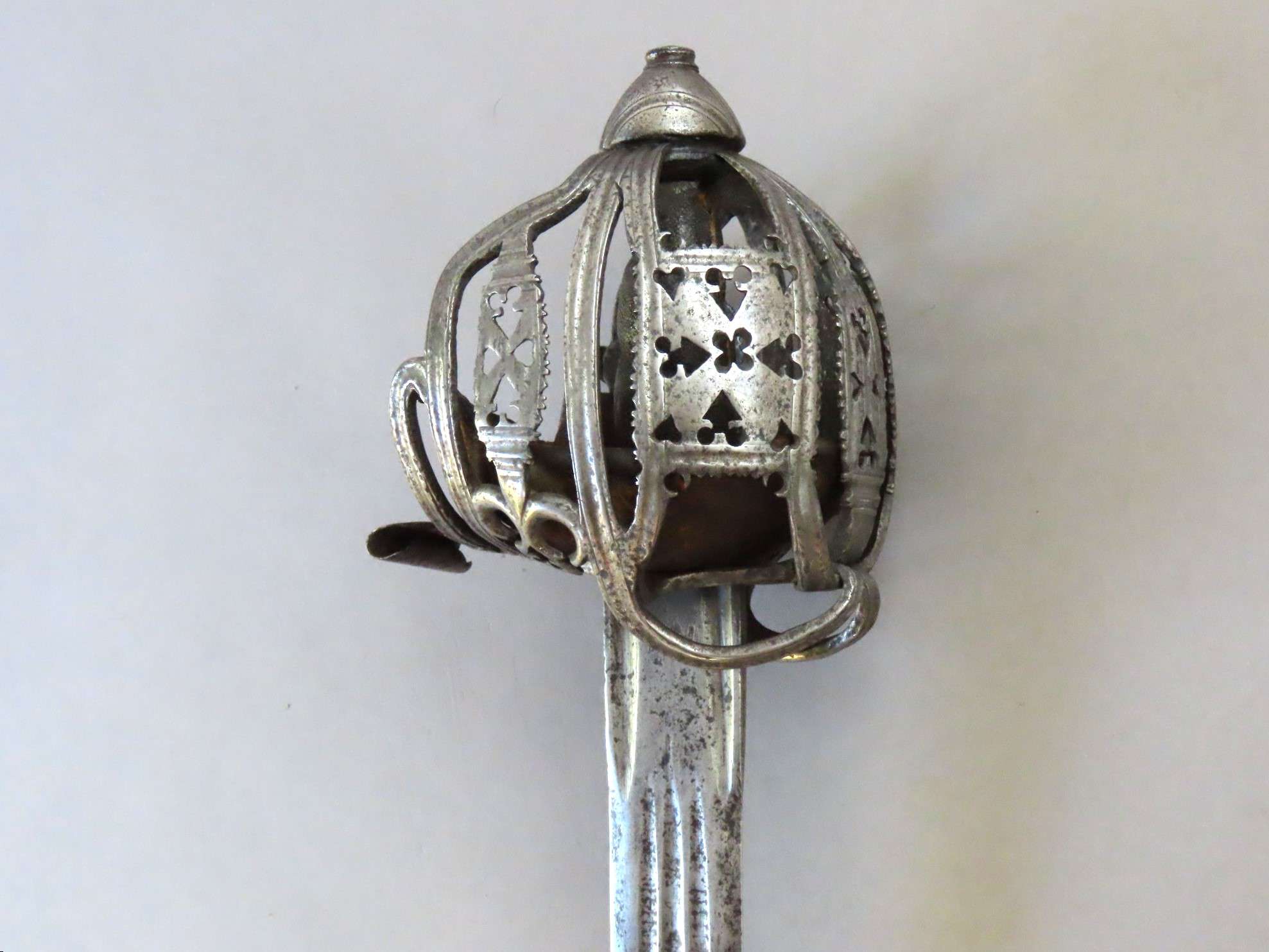
This sword, made in the years between the failed rebellions of 1715/19 and 1745/6, represents the final flourish of the Highland Clans as a martial society, and would be seen as obsolete after 1746. And as a civilian rather than a military weapon, dangerous for the owner to be seen with, given the brutally enforced prohibitions of arms in the Highlands that followed the last rebellion.
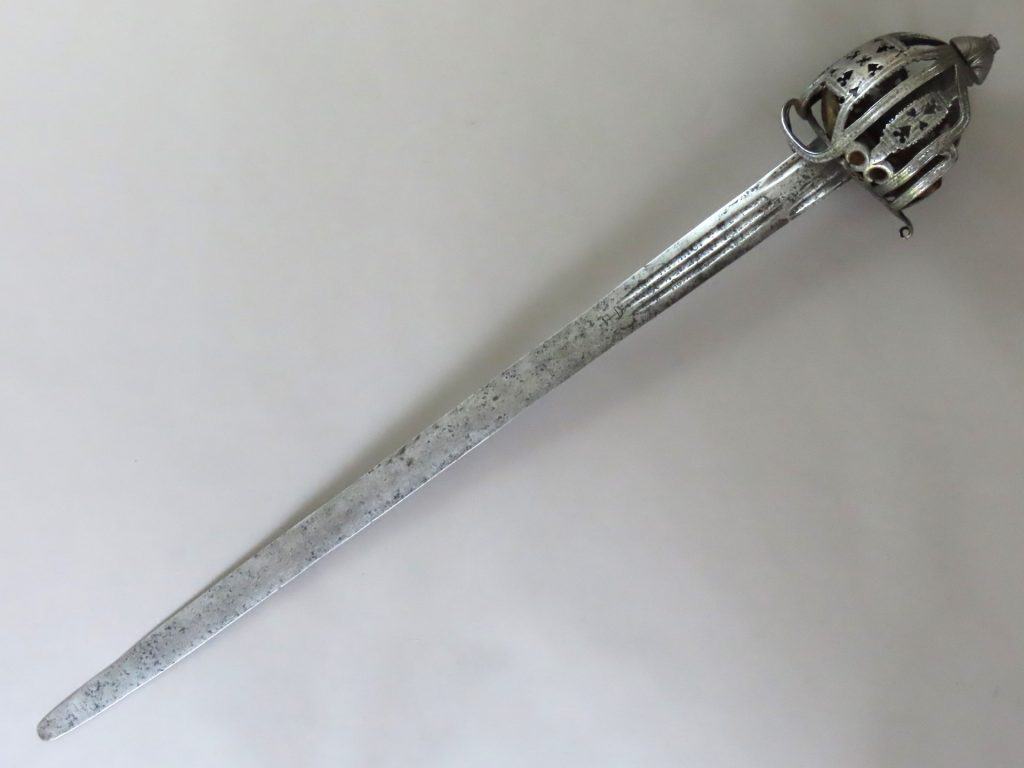
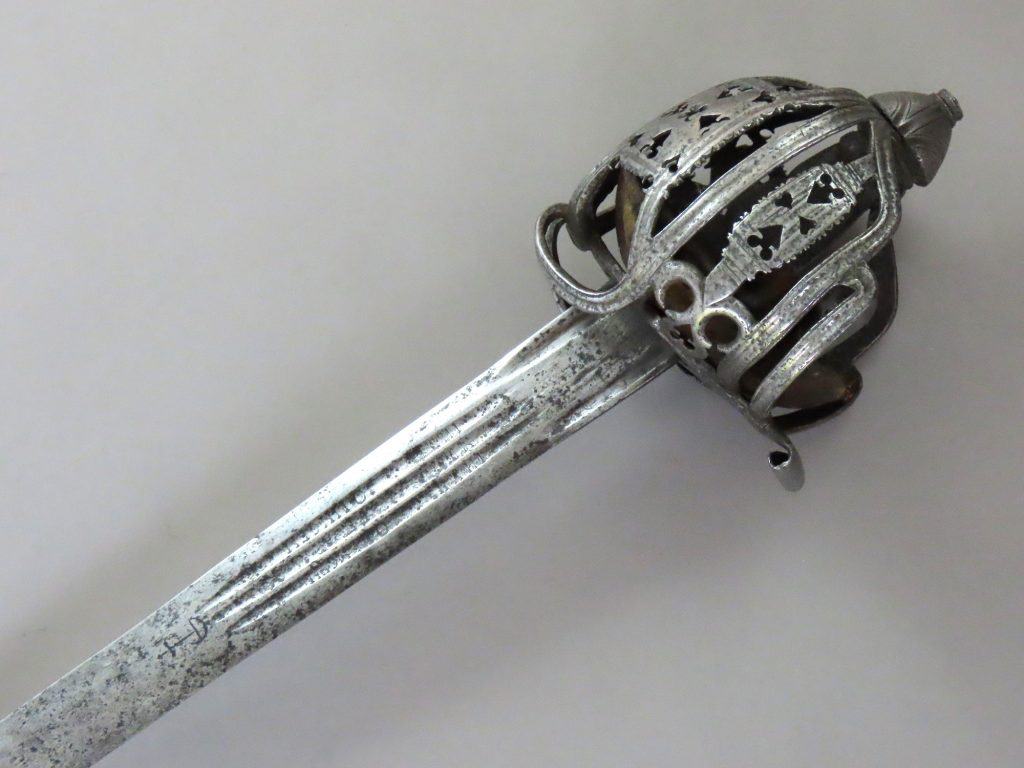
The hilt is of typically high quality workmanship for a Glasgow armourer, consisting of strong thick structural bars of flattened rectangular section. These are decorated on the outside with broad longitudinal grooves along the middle, with narrower incised lines on either side, in what has become known to historians as the distinctive “Glasgow Style” of hilt decoration. This style was developed by sword makers in Glasgow in the second half of the 17th century and flourished until the third quarter of the 18th. The style was adopted by the most skilled smiths in other sword making centres in Scotland and was also copied by the British military for some of its own basket hilted swords made in the Scottish style in the mid-18th century. Filing and incising the bars in this manner was a time consuming and skilled task demanding many hours of labour and reserved only for the best and most expensive hilts.

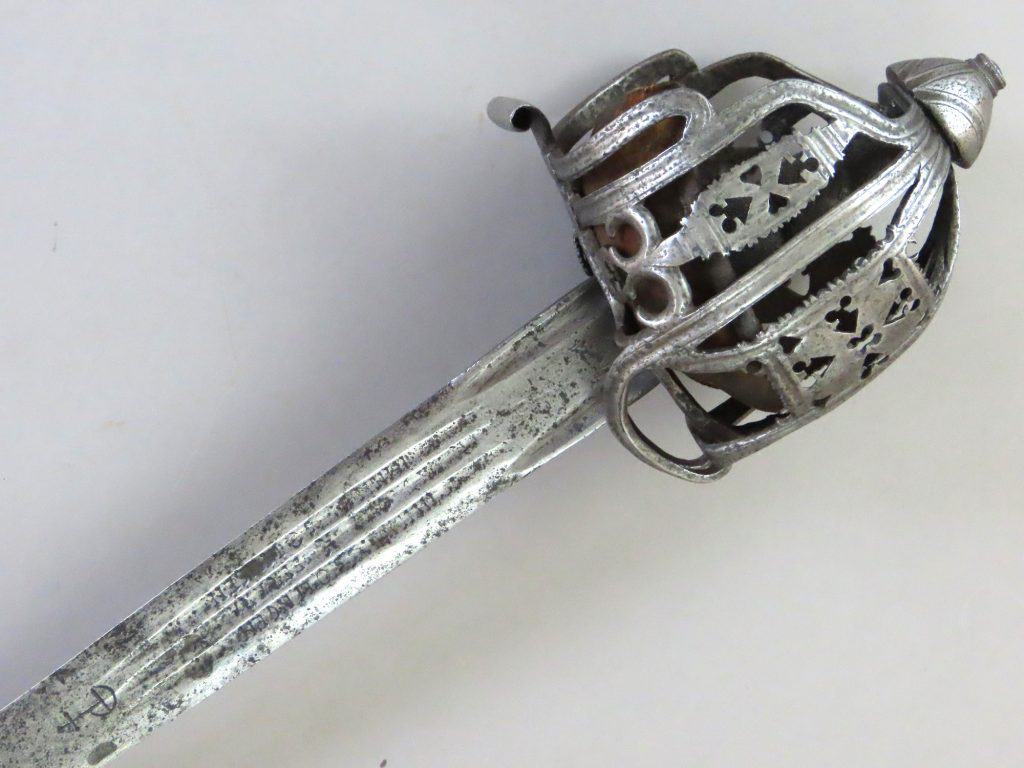
The two rear guard bars of the hilt are forged across the rear quillon. The two oblong raised pads which form the joins are incised on the outside with the letters “I S” on the upper pad with “G” on the pad below. The letters represent the name of the maker, John Simpson of Glasgow. The style of this hilt indicates that the sword was made in the second quarter of the 18th century and therefore by the second John Simpson, (II), rather than his father of the same name, who was Kings Armourer in Glasgow from the late 17th century until he died in 1717. He was succeeded by Thomas Gemmill to the position of Kings Armourer in Glasgow in 1718 who remained in the post until his death sometime around 1730. It is thought by some scholars that due to the prestige that John Simpson (II) enjoyed in Glasgow, as the preeminent sword maker in the town, that he succeeded Gemmill to the post. Whilst this is likely there is no surviving evidence to support this.
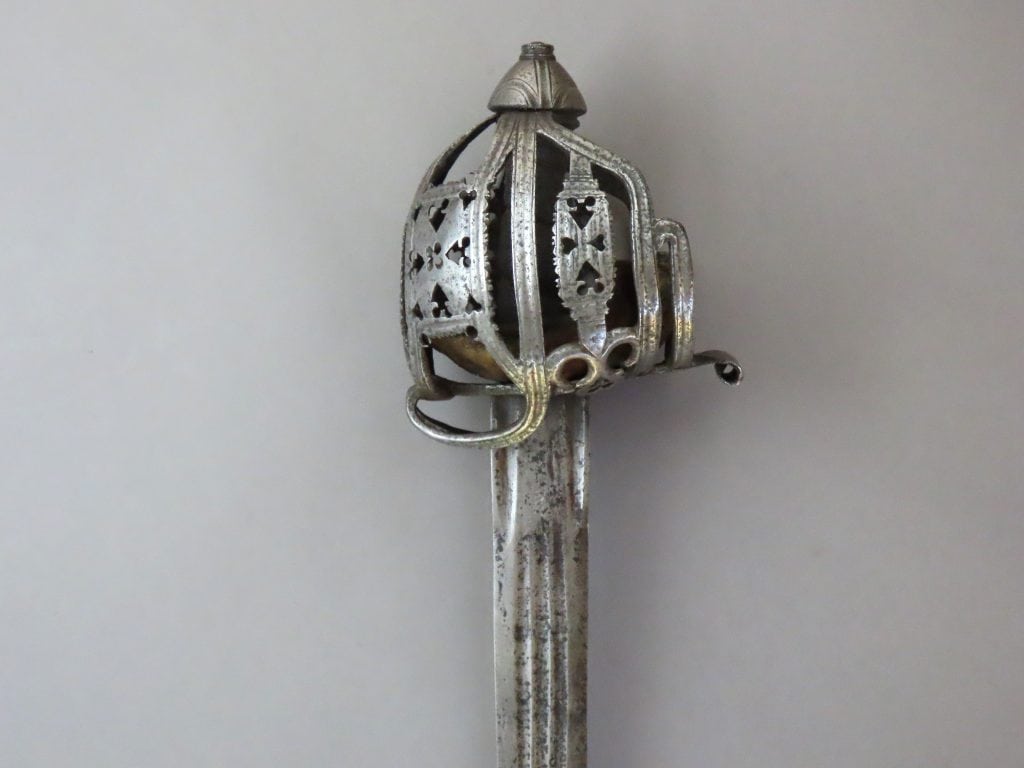

The hilt is an example of the hiatus of the Glasgow style of sword. The primary and secondary guard plates are finely fretted with merlons and crescents at the edges and pierced with geometric patterns of triangles, hearts and circles. The side guard plates terminate at the base with well formed rounded merlons. The cross bar is of bold construction and terminates in a sturdy scrolled wrist-guard. The dome shaped pommel is mounted with a ribbed button on top from which three equally spaced filed grooves radiate towards the pommel edge, each flanked by incised lines on each side, in the Glasgow manner. Upwardly arched crescents of filed lines of similar type fill the spaces between. The guard arms of the hilt tuck securely into a groove cut around the pommel just below its middle in the Scottish manner. The wooden grip is spirally grooved and bound with shagreen. The wire binding once present is now absent. The hilt retains its stitched leather liner.
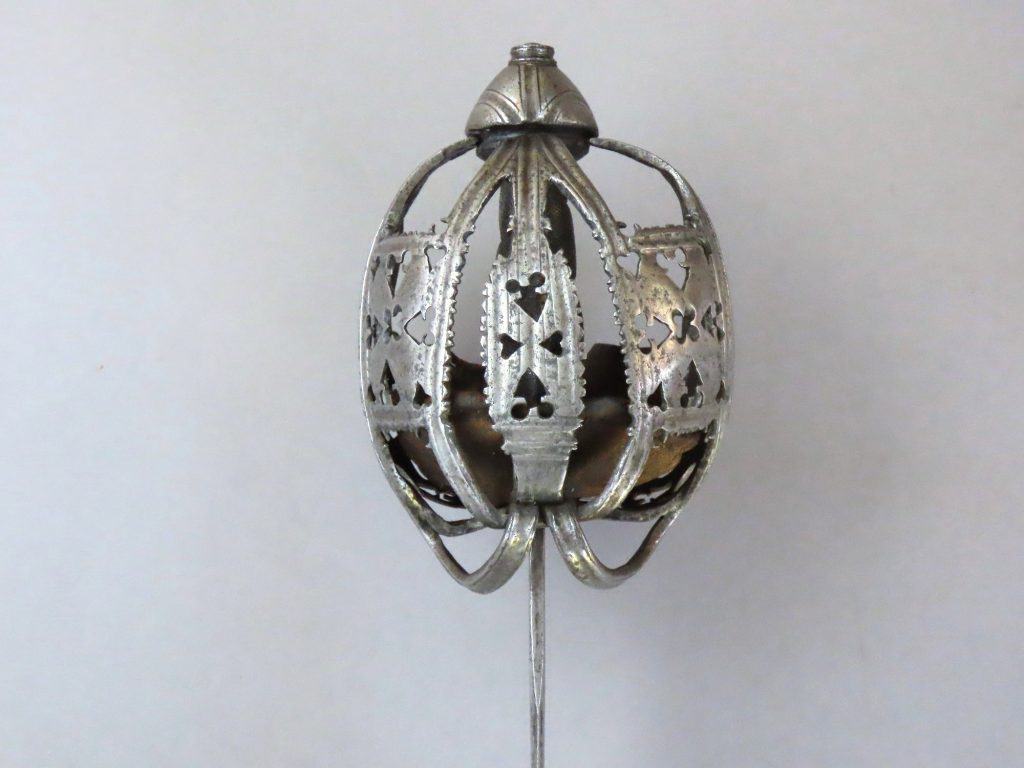

The fine quality broad double edged blade is 32.25 inches (82 cm) long and of tapering lenticular section to its rounded tip. It has a ricasso of flattened rectangular profile which is 2.25 inches (5.5 cm) long from the hilt and just over 1 & 5/8 of an inch (5.5 cm) wide. The shoulders of the ricasso are housed in a groove which accommodates the blade into the hilt in the Scottish manner. Two broad fullers formed inside each squared edge extend from the hilt to the end of the ricasso. From between these fullers, from the ricasso terminal, three adjacent central fullers extend together for 6 inches (15 cm). The fullers are stamped with marks and capital letters. The middle fuller on each side reads “ANDRIA FERARA” and the fullers above and below are stamped with “IHNN SOLINGEN”. Both inscriptions are interspersed and flanked with crosses and dots. An orb and cross mark is incised on each side just beyond the fuller terminals. These marks were probably inlaid with latten or copper when the blade was first made but this inlay is now lost.


Andria Ferara was a prominent and famous bladesmith who worked in Italy in the late 16th century. He exported blades marked with his name to Britain as well as to other countries in Europe. Britain did not have an established blade making industry of its own and the name came to represent a mark of quality in Britain, particularly in Scotland, for the next 150 years and was used in various guises by bladesmiths to spuriously add kudos to their blades. By the early 18th century Solingen had become the main blade making centre in Europe and due to the high demand for blades Scotland was a significant customer. Hence the name of the place of manufacture and the stamp of quality are represented on this blade. “IHNN” represents the name of the individual, now unknown, blade maker and is probably and abbreviation for “IOHANN”.


The basket hilt of our sword has been intentionally forged to appear slightly asymmetrical when viewed from the front, with the basket appearing slightly swollen to the right compared to the left. This is a further mark of quality indicating that the hilt was made for a right hand user.
The swollen side of the hilt accommodates the fingers of the right hand whereas the opposite side needs only to accommodate the thumb which takes up less space inside the hilt.

The sword is a good example of a fine quality and rare sword type. The outside has been rusted over time which has been cleaned off in modern times to create its present bright and pitted condition. The initials of the maker and the bladesmith’s marks are now worn but distinct. The overall proportions, balance and profile of the sword, are comparable with other swords made by John Simpson (II). For similar examples by John Simpson (II) see See Cyril Mazansky’s “British Basket-Hilted Swords”, Boydell Press, 2005, pages 103, 111, 116 and 117.